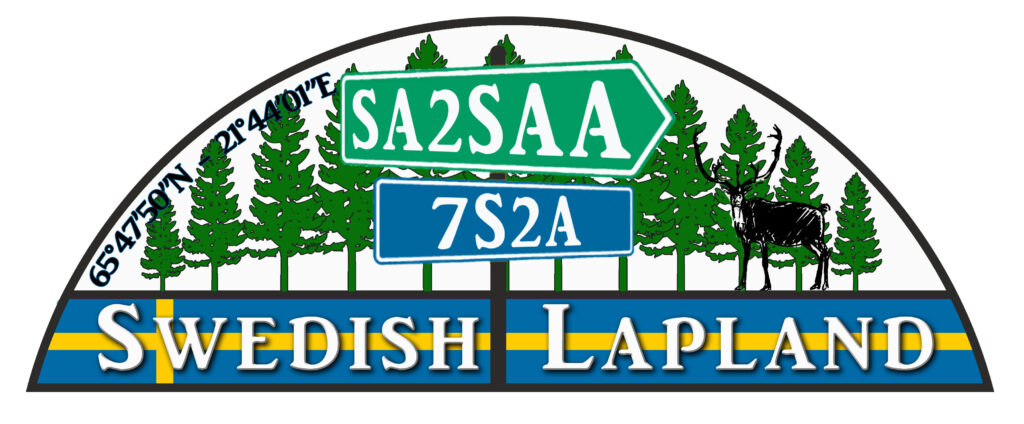Swedish Lapland – SA2SAA
Lapland or Sàpmi is an ethno-cultural region stretching over northern Fennoscandia (parts of Norway, Sweden, Finland, and Russia).

Lappland is a province in northernmost Sweden. It borders Jämtland, Ångermanland, Västerbotten, Norrbotten, Norway and Finland. Nearly a quarter of Sweden’s land area is in Lappland.
Lappland originally extended eastward. However, in 1809 the Russian Empire annexed the eastern part of Sweden, and created the Grand Duchy of Finland, which in effect split Lappland into a Swedish part and a Finnish part, both of which still exist today. It primarily consists of Västerbotten County in the south and Norrbotten County in the north, forming the further inland areas of the two counties. Lapland has the coldest climates of Sweden with vast seasonal differences caused by the high latitudes and the interior location.
This is where SA2SAA Station is located, at coordinates 65°47’50″N – 21°44’01″E or more precisely in KP05US 70km south of the Arctic Circle.
My name is Alex, many of you have come to know me as 5B4ALX, H2X, E6ET or other DXpedition calls.
Some have known me for professional reasons (installation of masts and antennas – HamTenna) or for the graphic creation of logos and QSLs (DXcreations).
I hope that what positive I have done in the past, as a radio amateur, installer, technician … it can also follow me with this new callsign and that I can have as many of you in my logs.
SA2SAA is my callsign for daily use, in Contest you will find me active as 7S2A.
My wife Cristina and me moved to Norrbotten County from Cyprus in early 2021, we live in a rural suburb of Alvsbyn, 100km north/west of Luleå.
SA2SAA is daily used for QSO and DX while 7S2A runs in Contest and 6m activity. 7S2A usually contesting as Single Operator QRP because I firmly believe that by operating in QRP you have a clearer idea of the station’s potential and consequently an idea of what to improve.

